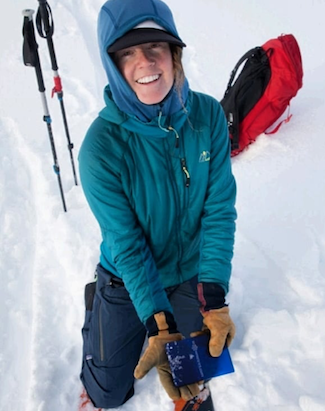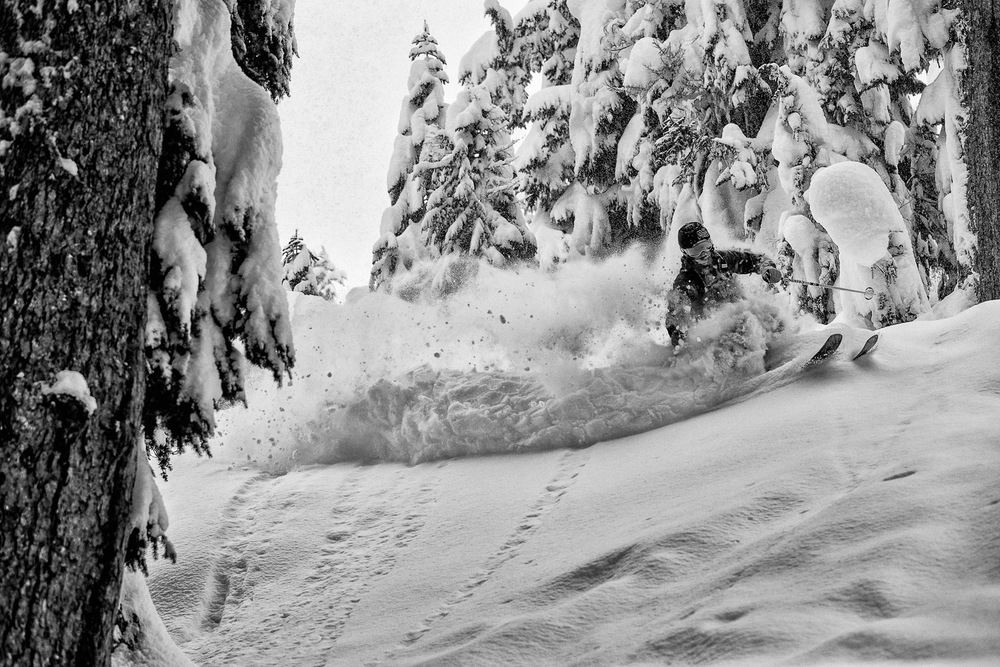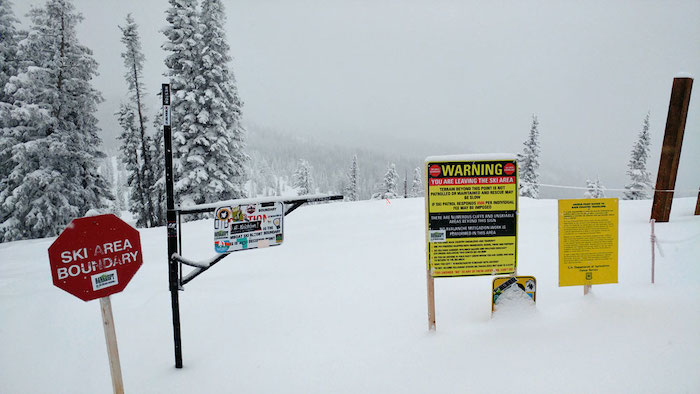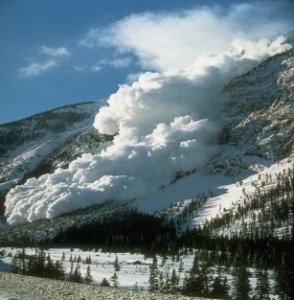
Nikki Champion
Thanks largely to COVID-19, backcountry skiing promises to be bigger than ever this year. This is hardly a surprise. In the backcountry, there’s no social distancing, capacity limitations, or reservation requirements. You don’t need an EPIC or an IKON pass. And if the resorts close down, your season doesn’t come to a screeching halt. As long as there’s snow and you can make it up the hill, you can still get to ski.
Nonetheless, backcountry skiing isn’t without risk, and one of the biggest is avalanches. Over the last 10 winters, there’ve been an average of 28 avalanche deaths per year in the US alone. In 2019, US avalanches killed 25 people.* And that was before a season like the one to come, where more people than ever could be heading out.
If you plan to ski in the backcountry, avalanche safety is critical. You need to take a course to learn what to do and what to look out for. And you need to pay attention to such people as Nikki Champion, who works as an Avalanche Forecaster for the Utah Avalanche Center.
I asked Nikki to what it’s like to be an avalanche forecaster, and here’s what she said….
SD: So Avalanche Forecasting is a unique and specialized job. Can you tell us how you ended up in this position?
NC: I grew up ski racing in Michigan and spent a lot of time in the mountains. I attended the Colorado School of Mines to study engineering and once there I transitioned my focus from alpine racing to backcountry skiing. I joined the Outdoor Recreation Center and as a trip leader, I began shadowing guides and acting as a backcountry guide to fellow students.
I later transferred to Montana State and that’s where things really clicked. I connected with a graduate student in the Snow Science Program who needed a field assistant with avalanche training. I soon realized how closely civil engineering and snow science aligned. While in Montana, I began conducting research in the Earth Sciences and Civil Engineering Departments. After graduating, I worked in the Subzero Science and Engineering Laboratory and investigated snow mechanics and also taught local avalanche courses. Last winter, I went up to the Chugach Range in Alaska and worked with the Chugach National Forest Avalanche Information Center (CNFAIC). A longtime Utah resident and former UAC mentee, Wendy Wagner, had moved into the position of director at CNFAIC. She, and the rest of the women at the CNFAIC, were incredible mentors to me and spoke highly of the program in Utah. When the position for a new forecaster became available there, I was lucky enough to snag it. It also helps that I spend the majority of my time on snow, as I guide during the summers on Mount Rainier, in the Cascades, and on Denali.
SD: What’s a typical day for you? Do you go out in the field every day? And what procedures do you use to make your predictions?
NC: Most of us in the Salt Lake office forecast two days per week. On forecasting days we rise early and head into the office around 3:30 or 4 AM. We spend time looking over all the weather data, recent observations, and avalanche activity, condensing all the information to formulate our forecasts by 7 AM. We then record the avalanche and weather forecasts for the phone hotlines and the local radio station. The remainder of the shift is spent managing all the other forecasters out in the field and helping with other projects around the office or our educational programming. For the rest of the workweek, we spend 4-5 days out in the field, gathering information and observations to inform our forecasts. For field days, we focus on collecting as much information as we can to provide our robust forecasts. We’ll seek out questionable layers in the snow, investigate certain aspects, or try to confirm hunches or suspected weaknesses lurking in the snowpack. We’ll also target areas that haven’t recently been examined. All this effort helps paint a clear picture and inform the lurking hazards for the entire avalanche rose compass. If there’s been any avalanche activity, we also like to get out and investigate the triggers and examine all the layers within the snowpack to establish which layer failed. Basically, we’re looking for any and all observations that can better inform our avalanche reports.
SD: What are your favorite and least favorite parts of your job?
NC: I love that I can combine my passion for the outdoors while being mentally engaged. Assembling the forecast is like a puzzle. Then we must effectively communicate the complexity of the snowpack in a digestible format. There is so much variety in this job; no two days are alike!
My least favorite part would be the mid-winter 3 AM wake up. The combination of long days and complex problems can leave us pretty exhausted by the end of the season.
SD: What’s the biggest challenge you face?
NC: I am going to break this down into two parts: The biggest challenge I have is communication. Our primary goal is to effectively convey the risks associated with backcountry travel amid constantly fluctuating conditions in complex terrain. We synthesize all the data into a comprehensive avalanche forecast, with the goal of painting a complete picture in few words. We’re compiling and managing so much information to help people make better decisions when having fun in the snow.
But as far as being a female in the industry, my biggest challenge is finding female mentors. Part of the reason I wanted to come to work with the UAC in Utah was the mentorship; the group here is phenomenal. Yes, it is an intimidating field; it can be hard to gain respect and feel competent. I’ve been really fortunate to have great mentors, both male and female. To find strong female mentors, I found I had to actively seek them out. This is the hurdle within the industry simply because there are just fewer women in leadership positions.
SD: Thanks to the coronavirus, it seems likely that more people will be taking to the backcountry this coming season. What advice to you have for them?
NC: The UAC’s Know Before You Go workshops are an excellent first stepping stone. They are now offered all across the country, as well as internationally. Most educational providers also offer refresher courses and free lectures. If you’re keen to spend more time in the backcountry, the UAC has a 3-hour Backcountry 101 course with a full day in the field with an educator. Most avalanche centers are beginning to provide more of these stepping stone classes, something between a lecture and a Level 1. The next step would be a more in-depth 3-day Avalanche Level 1 course. Educational programming focuses on terrain choice, developing companion rescue skills, basic snow science, and more. The UAC also offers free online virtual learning modules, which could be very helpful in this weird time we’re having.
SD: So what’s your gear set up like? Any gear picks or suggestions for backcountry skiing?
NC: I have a few different set-ups depending on the time of the year, conditions, and where I’m skiing. I always run the Dynafit Hoji Pro boot. I’ve found that comfort and warmth is more important to me than being light and fast. As for skis, I spend most days on a 99 underfoot lightweight ski, but also rotate in an 87 and a 112, depending on conditions. The two things that I never leave home without is my OR Sunhoody, and my Smith Longfin Sunglasses. I like to have a lightweight hood and sun protection no matter the conditions, and I always have sunglasses to protect my eyes.
As for folks getting into the backcountry, I would say getting something affordable is great for almost anything other than avalanche rescue equipment. When it comes to avalanche rescue gear, like your beacon, shovel, and probe, buying new is important. Beyond that, it just comes down to using the gear you learned on and find most efficient. I’ve always been a big fan of the pieps/BD beacons. I find they’re very user friendly and have a good long range.
SD: Do you ski inbounds? If so, what’s your favorite resort and why?
NC: I do ski inbounds! We work very closely with the ski resorts. A good amount of our forecasting data comes directly from ski patrollers and also backcountry users who submit observations on our website. We interface daily with resorts to discuss avalanche activity, temperatures, weather, and wind. This additional information helps us better illuminate the threat of avalanches in Utah’s mountains.
Outside of just interfacing with the resorts, I also enjoy getting out on them on forecast afternoons — or days off. I’m still getting to know each Utah resort well, so I’ll check back in a few years!
SD: What advice do you have for women who want to work in the outdoors?
NC: Apply for all the jobs and opportunities! As women, we tend to not apply fot things until we have 110% of the requirements, and that often leaves the applicant full of males who might have maybe 85% of the requirements. We have to get more women in leadership and mentorship roles, as well as in the application pools to begin seeing a change in the industry. Also, if you see women in these leadership and mentorship roles, reach out to them! They’d be happy to help.



